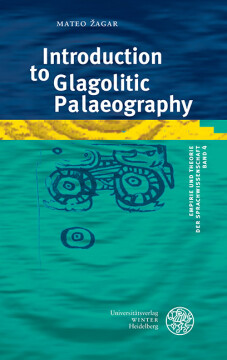
Zusätzliche Informationen
Bibliografische Daten
Abstract
The palaeography of the first Slavic script – the Glagolitic script – is being published in English Language for the first time. Unlike former historiography-based palaeographic textbooks, this study is linguistically substantiated. After presenting the elemental historical and philological knowledge on the creation of the script and its relation to the parallel Slavic script – the Cyrillic – the author goes on to distinguish the development of those linguistically-based segments (e.g. graphemes) from the means that optimize the transfer of linguistic message through the visual writing system. The evolution of letter forms is being observed in the long process of minusculization. The coordination of letters in lines and the readjusting of their forms to the four line system turned out to be the ‘spiritus movens’ of the changes not only in the letter forms but in the script’s entire visual appearance as well. At the focus of interest, there are the oldest Macedonian, Bulgarian, Czech and Croatian Glagolitic texts of the 10th and the 11th century.
Inhaltsverzeichnis
| Zwischenüberschrift | Seite | Aktion | Preis |
|---|---|---|---|
| Cover | Cover | ||
| Titel | 3 | ||
| Imprint | 4 | ||
| Contents | 5 | ||
| Introduction to the English edition | 7 | ||
| I The linguistic foundations of (Slavic) palaeography | 11 | ||
| II An overview of Glagolitic palaeographies | 23 | ||
| III The beginnings of Slavic literacy – the Byzantine context | 57 | ||
| IV Glagolitic script and Cyrillic script – the issue of primacy | 67 | ||
| V Origins and models of the establishment of Glagolitic script | 71 | ||
| What do the sources say? | 73 | ||
| Exogenous theories of the origin of Glagolitic script | 79 | ||
| The symbolic and geometric conception of Constantine’s Glagolitic script | 130 | ||
| VI The codification of Cyrillic script and the issue of its authorship | 163 | ||
| VII Greek/Byzantine script as a design and/or structural model for the first Slavic scripts | 179 | ||
| VIII A comparative alphabetical table of Slavic scripts | 189 | ||
| IX Alphabet and azbuka: letter order and the names of letters | 197 | ||
| The Glagolitic abecedaria | 207 | ||
| The phonological basis of the ‚azbuka‘ inventory | 229 | ||
| X Graphemic idiosyncrasies in the organisation of the Slavic ‚azbukas‘ – an attempted reconstruction | 235 | ||
| Vowels | 237 | ||
| Consonants | 253 | ||
| Differences in inventory between the Slavic ‚azbukas‘ | 267 | ||
| XI Diacritic marks in texts of the Glagolitic Old Church Slavonic canon | 271 | ||
| XII Numerals in Old Church Slavonic texts | 281 | ||
| Greek templates in the writing of numerals | 281 | ||
| Numerals in Glagolitic texts | 284 | ||
| Numerals in Cyrillic texts | 288 | ||
| XIII The transcription (pronunciation) and transliteration of Glagolitic and Cyrillic texts | 293 | ||
| XIV The material framework of manuscript text and page layout | 307 | ||
| XV An overview of the oldest Glagolitic monuments | 321 | ||
| The oldest basic Cyrillic texts | 367 | ||
| XVI Palaeographic starting points in the approach to the oldest Glagolitic texts | 373 | ||
| Linear organisation | 378 | ||
| The oldest Glagolitic texts at the graphetic level | 392 | ||
| ‚Scriptura continua‘ and its decline | 393 | ||
| Punctuation | 395 | ||
| Capital letters | 399 | ||
| Ligatures | 417 | ||
| Abbreviations | 428 | ||
| Contractions | 428 | ||
| Suspension with superscriptions | 431 | ||
| XVII Examples of the palaeographic characteristics of the oldest Glagolitic texts | 433 | ||
| The script of Glagolitic abecedaria | 455 | ||
| The script of the oldest Glagolitic inscriptions and graffiti | 456 | ||
| XVIII Basic graphomorphological changes in Glagolitic letters | 473 | ||
| XIX Conclusion | 501 | ||
| Literature | 505 | ||
| Index of names | 533 | ||
| Backcover | Backcover |


 Publishing Platform by CloudPublish
Publishing Platform by CloudPublish